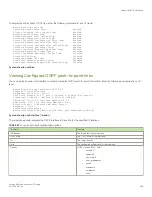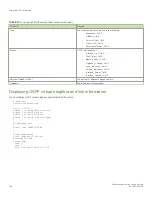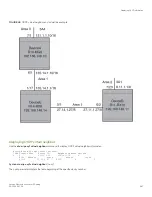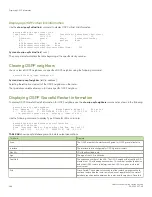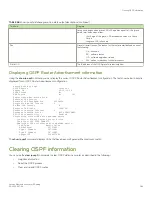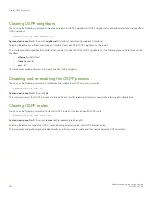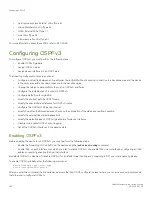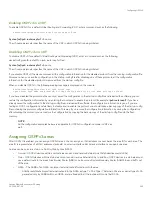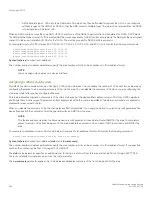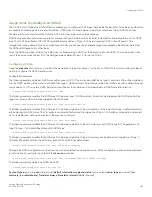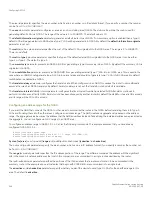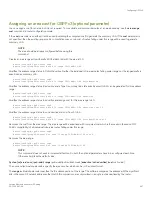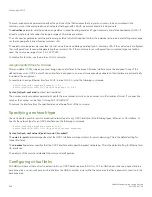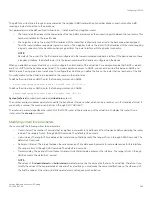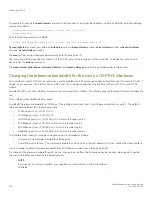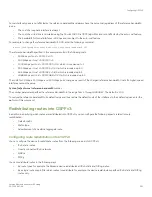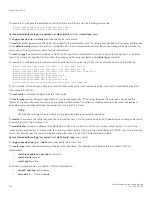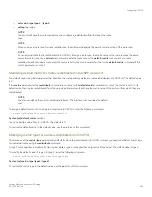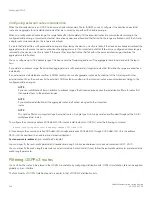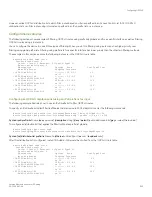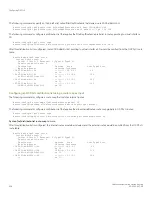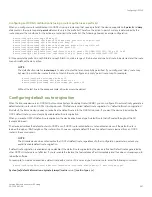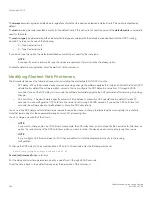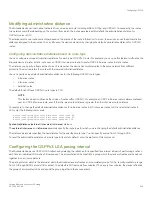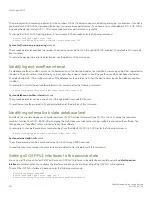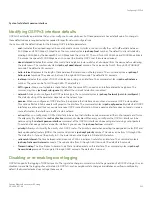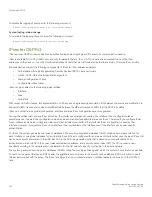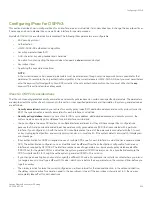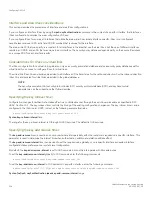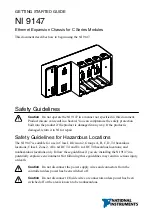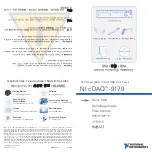
The path for a virtual link is through an area shared by the neighbor ABR (router with a physical backbone connection) and the ABR
requiring a logical connection to the backbone.
Two parameters must be defined for all virtual links -- transit area ID and neighbor router:
•
The transit area ID represents the shared area of the two ABRs and serves as the connection point between the two routers. This
number should match the area ID value.
•
The neighbor router is the router ID (IPv4 address) of the router that is physically connected to the backbone when assigned
from the router interface requiring a logical connection. The neighbor router is the router ID (IPv4 address) of the router requiring
a logical connection to the backbone when assigned from the router interface with the physical connection.
NOTE
By default, the router ID is the IPv4 address configured on the lowest-numbered loopback interface. If the device does not have
a loopback interface, the default router ID is the lowest-numbered IPv4 address configured on the device.
When you establish an area virtual link, you must configure it on both ends of the virtual link. For example, imagine that ABR1 in areas 1
and 2 is cut off from the backbone area (area 0). To provide backbone access to ABR1, you can add a virtual link between ABR1 and
ABR2 in area 1 using area 1 as a transit area. To configure the virtual link, you define the link on the router that is at each end of the link.
No configuration for the virtual link is required on the routers in the transit area.
To define the virtual link on ABR1, enter the following command on ABR1.
device(config-ospf6-router)# area 1 virtual-link 10.157.22.1
To define the virtual link on ABR2, enter the following command on ABR2.
device(config-ospf6-router)# area 1 virtual-link 10.0.0.1
Syntax:
[no] area
{
number
|
ipv4-address
}
virtual-link
router-id
The
number
and
ipv4-address
parameters specify the transit area ID, area number, which can be a number, or in IPv4 address format. If
you specify a number, the number can be from 0 through 2,147,483,647.
The
router-id
parameter specifies the router ID of the OSPF router at the remote end of the virtual link. To display the router ID on a
router, enter the
show ip
command.
Modifying virtual link parameters
You can modify the following virtual link parameters:
•
Dead-interval: The number of seconds that a neighbor router waits for a hello packet from the device before declaring the router
is down. The range is from 1 through 65535 seconds. The default is 40 seconds.
•
Hello-interval: The length of time between the transmission of hello packets. The range is from 1 through 65535 seconds. The
default is 10 seconds.
•
Retransmit-interval: The interval between the retransmission of link state advertisements to router adjacencies for this interface.
The range is from 0 through 3600 seconds. The default is 5 seconds.
•
Transmit-delay: The period of time it takes to transmit Link State Update packets on the interface. The range is from 0 through
3600 seconds. The default is 1 second.
NOTE
The values of the
dead-interval
and
hello-interval
parameters must be the same at both ends of a virtual link. Therefore, if you
modify the values of these parameters at one end of a virtual link, you must make the same modifications on the other end of
the link.The values of the other virtual link parameters do not require synchronization.
Configuring OSPFv3
FastIron Ethernet Switch Layer 3 Routing
53-1003627-04
299
Summary of Contents for FastIron SX 1600
Page 2: ...FastIron Ethernet Switch Layer 3 Routing 2 53 1003627 04 ...
Page 16: ...FastIron Ethernet Switch Layer 3 Routing 16 53 1003627 04 ...
Page 20: ...FastIron Ethernet Switch Layer 3 Routing 20 53 1003627 04 ...
Page 142: ...FastIron Ethernet Switch Layer 3 Routing 142 53 1003627 04 ...
Page 150: ...FastIron Ethernet Switch Layer 3 Routing 150 53 1003627 04 ...
Page 200: ...FastIron Ethernet Switch Layer 3 Routing 200 53 1003627 04 ...
Page 214: ...FastIron Ethernet Switch Layer 3 Routing 214 53 1003627 04 ...
Page 350: ...FastIron Ethernet Switch Layer 3 Routing 350 53 1003627 04 ...
Page 476: ...FastIron Ethernet Switch Layer 3 Routing 476 53 1003627 04 ...
Page 588: ...FastIron Ethernet Switch Layer 3 Routing 588 53 1003627 04 ...

